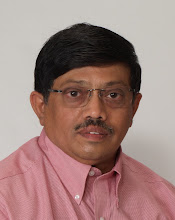"What was once East Pakistan" by Syed Shahid Husain
Syed Shahid Husain was a middle level civil servant sent
from West Pakistan to work in civil administration of a district in East
Pakistan. He had sufficient seniority in
the administration to provide him a front row seat to watch the events as they
unfolded and an insider perspective of the events that led to the birth of
Bangladesh.
Syed Shahid Husain considers it important for history to preserve various narratives to ensure right lessons are learnt and confesses to a strong bias for democracy and some antipathy against brutal military assault on an unsuspecting civilian population in his recording of the events:
- The 1971 event was not a civil war. Nor was it a rebellion. It was just a civil resistance movement and an assault on a civilian population by its own military.
- One cannot blame Bhutto (he was hardly in a position to influence events); one cannot blame India (it waited for 9 months for military rulers to see sense and reach a settlement with compatriots in East).
- Bengalis had cause to resent domination by the Western half. In the district for which he was commissioner, debates and discussions degenerated into acrimony and civil officials from East were “not talking” with civil officials posted from the Western half.
- Bengalis were peaceful people. As an administrator of a town in KP, he oversaw more than 10,000 licenses for arms. When he moved to East Pakistan he was surprised to notice that a comparable town had less than 12 licenses. However, the same Bengalis acquired enough arms to be capable of disrupting military movements within 3 months after the 25 Mar 1971 military crackdown
- The military government in East Pakistan came to a complete standstill after boycott by people (in response to the postponement of convening the elected legislature). Husain had to shut down the district administration offices at the request of his subordinates since none of them was willing to work. Banks stopped transferring money to the Western half; or accept Treasury notes from Federal Government. When Admiral Ahsan resigned his position as Governor of East Pakistan in protest against military actions, no judge in East Pakistan was willing to administer oath of office to his replacement General Tikka Khan.
- The army did commit despicable crimes against its own people in the East:
- Whenever General Niazi visited an operational area, he would make ti a point to ask his troops how many Hindus they had killed.
- Brigadier Abdullah Khan of 23 Brigade issued an order in writing to kill Hindus.
- Major Mumtaz Khan told the author that his unit swooped upon a village and killed every one in the village (men, women and children). A baby survived and was crying. The Major pleaded with his colleagues to “finish off the baby”. The colleagues refused because they felt the baby deserved to die a slow death.
- Ayub Khan, in his diary entry on 11 Nov 1971, records that a “young army officer brought to the CMH Rawalpindi for psychiatric treatment had supposedly killed nearly 14,000 people in East Pakistan.
- However, the author is aware that the Bengalis committed some despicable crimes as well.
- Popular opinion in the Western half did not have sympathy for the East. Intellectuals in Karachi felt that “the crackdown was long overdue and probably justified”.
- Nixon and Kissinger, according to the author, were devoid of any morality and ethics and failed to realize the magnitude of the crisis.
- To the author, 1971 was the year of national infamy for Pakistan.
The book is a demonstration of another unconfessed
bias: a bias for truth. The book is a testament to the author’s courage to speak truth to power.

No comments:
Post a Comment